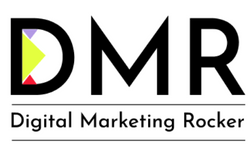Welcome to Module 3 of our exciting SEO adventure – On-Page Optimization! 🚀 In this module, we’ll dive into some cool stuff that’ll make your website shine like a superstar on the internet stage. 🌐✨
1. Title Tags, Meta Descriptions, and Headings: Making Your Website Shine
Imagine your website as a book, and these things are like the sparkly cover, catchy blurb, and chapter titles. They tell everyone what your page is about.
Title Tags: These are like the book’s title. They show up in search results and at the top of web browsers. For example, if your website is about yummy cupcakes, your title tag could be “Delicious Cupcake Creations – Bake Me Sweet.”
Meta Descriptions: Think of these as the exciting blurb on the back cover. They give a sneak peek of what’s inside. So, for our cupcake site, a meta description could be “Explore a world of mouthwatering cupcakes and frosting wonders that will satisfy your sweet cravings.”
Headings: These are like the titles of different sections in your book. They break up the content and make it easier to read. If you’re writing about different cupcake flavors, you could use headings like “Classic Vanilla,” “Choco Delight,” and “Berry Bliss.”
Headings tags follow sequence like this-
h1
h2
h3
h4
h5
h6
2. URL Structure and Permalinks: Crafting Web Address Magic
URLs are your website’s address. Imagine giving someone directions to your house. You’d want it to be clear and easy to follow.
URL Structure: This is how you organize your web address. Keep it simple and related to your content. Instead of a messy address like “www.digitalmarketingrocker.com/abcd/123?456,” go for “www. digitalmarketingrocker.com/seo.”
Permalinks: These are permanent links to your pages. They should be memorable and give a hint about the content. If you’re sharing a recipe for vanilla cupcakes, a good permalink could be “www.yummycupcakes.com/vanilla-cupcake-recipe.”
3. Image Optimization and Alt Tags: Painting Pictures with Words
Images make your website look pretty, but search engines can’t “see” them like humans can. Alt tags are like descriptions that help search engines understand what the images are about.
Image Optimization: Make sure your images aren’t too big, so your website loads quickly. For instance, if you have a photo of a unicorn cupcake, you could resize it to a reasonable size before uploading it.
Alt Tags: These are like captions for your images. They explain what’s in the picture. So, for your unicorn cupcake image, the alt tag could be “Adorable unicorn cupcake with rainbow frosting and sprinkles.”
4. Internal Linking Strategies: Creating Pathways in Your Website Garden
Internal linking is like creating secret passages in your website. It helps visitors explore more of your awesome content.
Internal Links: These are clickable words or phrases that lead to other pages on your site. If you’re writing about cupcake decorations, you could add a link like “Check out our guide to creative cupcake icing styles!” that takes readers to another page with decorating tips.
Alright, young SEO whiz, you’ve just unlocked some On-Page Optimization secrets that will make your website sparkle and shine like a treasure chest. 🎉 Keep exploring and learning, and get ready to uncover even more magical SEO wonders in the next module!




